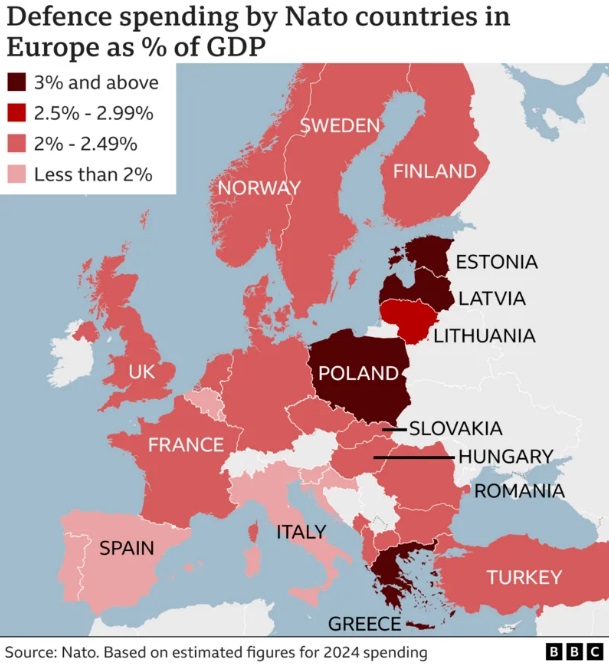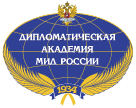
NATO's 5% spending commitment is a watershed moment for an alliance dogged by laggard investment outside the U.S. — if, that is, members actually fork over the trillions in long-term spending required to make it a reality, Axios notes.
Why it matters: At a time of weapons upheaval and global war, friends are precious.
New blocs of influence are solidifying. China, Iran and North Korea fuel a Russian war machine in Eastern Europe while the U.S. reevaluates its role abroad, including arms deliveries.
There's a newfound determination in many capitals to invest in European security and reduce reliance on Washington.
The question is whether it's a fleeting feeling or the beginnings of a decade-long push to hit 5%.
The big picture: The spending outlook, according to defense analysts, industry executives and Europe watchers Axios consulted, is complicated by these four factors:
Proximity and fears of invasion.
Countries closest to Russia have traditionally spent the biggest chunk of gross domestic product — and will continue to do so.
Poland, Estonia, Latvia and Greece have already broken the 3% mark. Meanwhile, far-flung Spain opted out, citing self-determination.
Political volatility and an appetite for risk among ruling parties.
Europe is not a monolith: Public sentiment in Germany, Italy and the Netherlands is not uniform.
"For some of these leaders, they have a very fraught domestic political situation," Connor Murray, a research analyst at the Center for Arms Control and Non-Proliferation, said in an interview.
"They've had to spend pretty significant political capital to get where they are," he added, "and to then turn around and potentially jack up military spending could be really detrimental."
Creative accounting paired with flexible definitions.
The 5% goal flows from two accounts: 3.5% for traditional defense and 1.5% for broader security investments, like cyber security and shored-up critical infrastructure.
"The 3.5% on defense is a hard climb, but the threat environment is making it harder to ignore. The additional 1.5% for innovation is even more critical — and more disruptive," Wendy Anderson, a former Palantir Technologies senior vice president and chief of staff to the late Defense Secretary Ash Carter, told Axios.
"That's where Europe must stretch the most, because that's where the leverage lies: in accelerating dual-use capabilities that can power both security and economic competitiveness."
The actual timeline, aka the long game: Allies have until 2035 to make good on their promise. (A status update is due years prior.) A lot can change between now and then, including who sits in the White House.
"If history is any indication, and the example of the last decade is quite telling, we may not have all 32 allies achieving the goal by 2035," Federico Borsari, an expert at the Center for European Policy Analysis, told Axios.
It's also worth noting that "the very nature of democratic states, with their short electoral cycles and pluralistic decision-making process, is a barrier in itself compared to authoritarian regimes, where a single leader makes the ultimate decision," Borsari said.
Catch up quick: President Trump met with NATO boss Mark Rutte in Washington on Monday.
Speaking from the Oval Office, the president applauded the idea of "a strong Europe" and described the alliance's meeting last month in The Hague as "tremendous."
"These are wealthy nations. They have a lot of money."
The bottom line: "Five percent of GDP total is ambitious, but it's not impossible," Anja Manuel, the executive director of the Aspen Strategy Group, said in an interview. (This year's Aspen Security Forum will have a significant transatlantic bent.)
The conversation, she said, shouldn't "be just about raw numbers, but really about capability and readiness."
"We all have to spend those defense budgets better."
But several countries have already expressed doubts about the possibility of increasing military spending. “So many priorities, so little money,” Czech Foreign Minister Jan Lipavsky told reporters, saying defense spending would have to compete with existing demands such as agriculture. Talks will be “very difficult,” he said.
read more in our Telegram-channel https://t.me/The_International_Affairs

 11:20 22.07.2025 •
11:20 22.07.2025 •






















